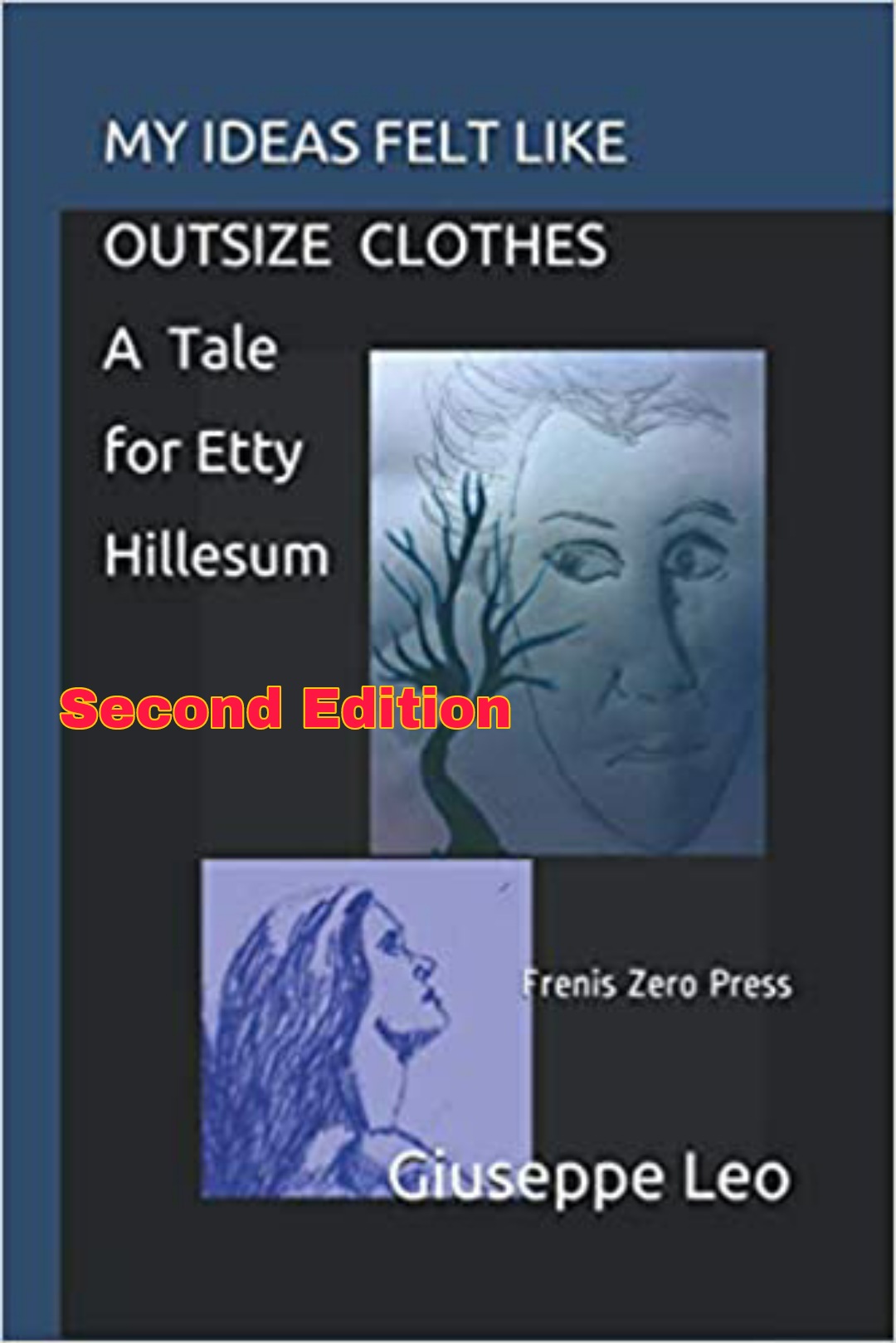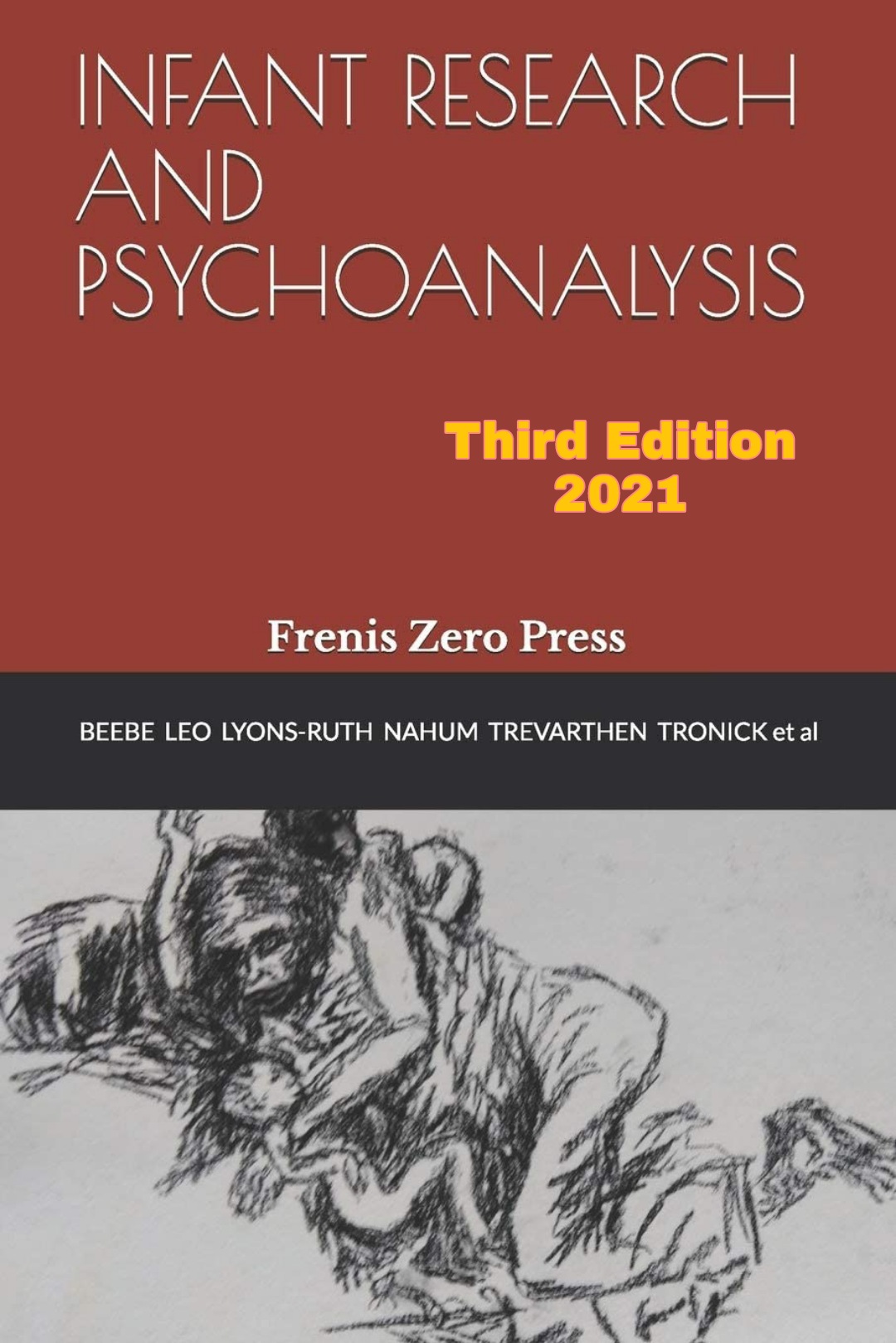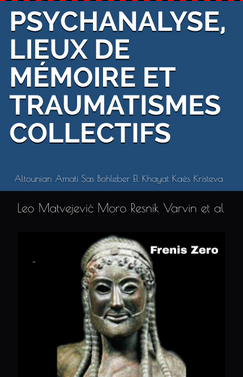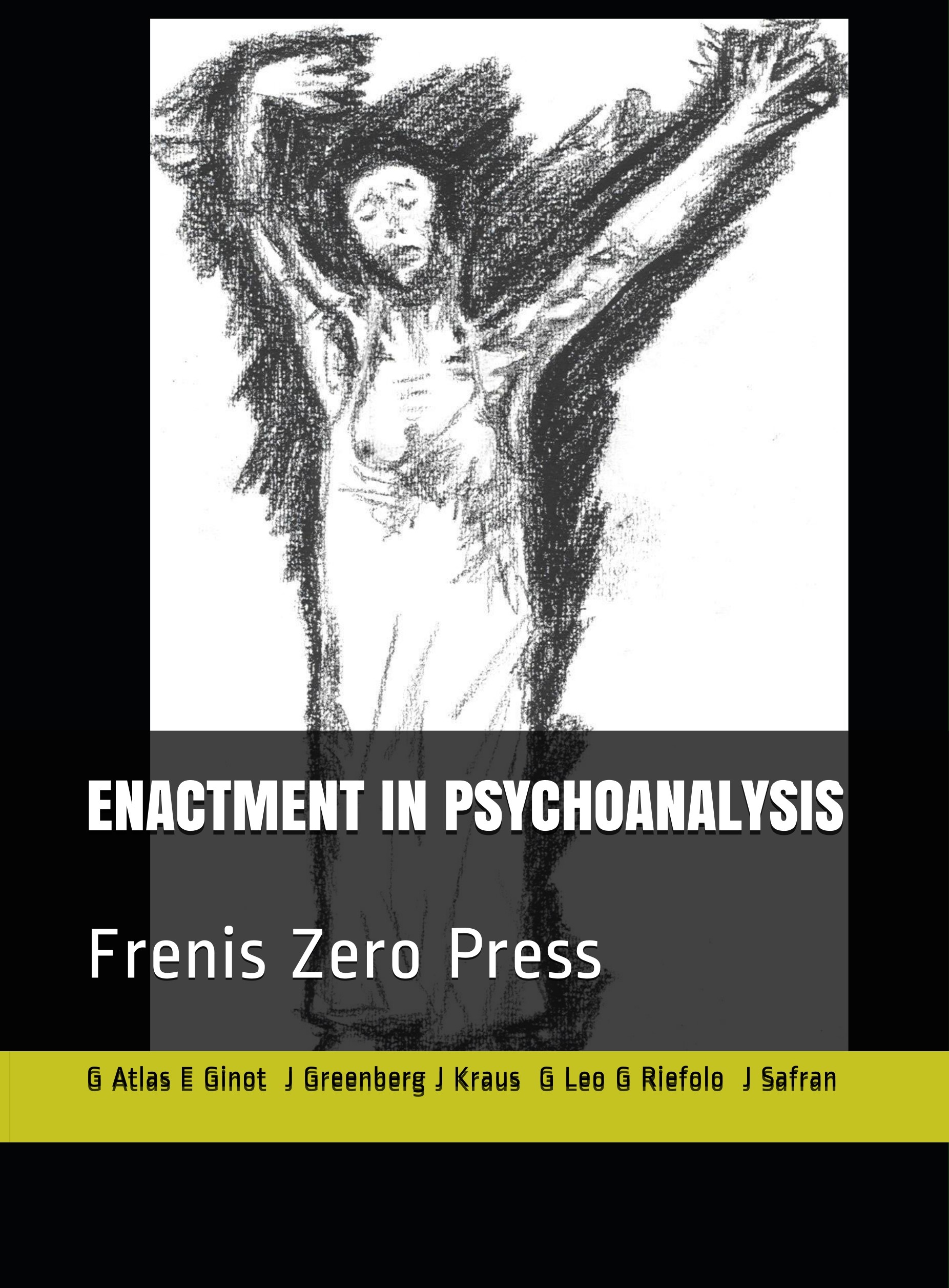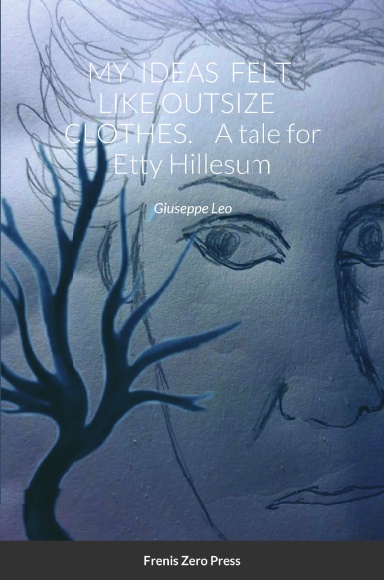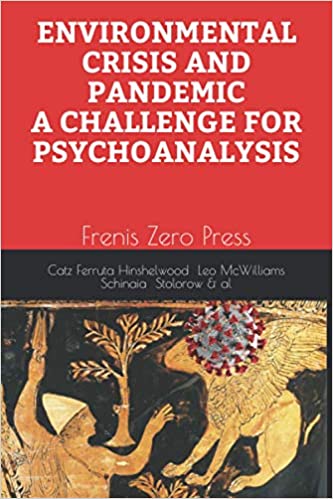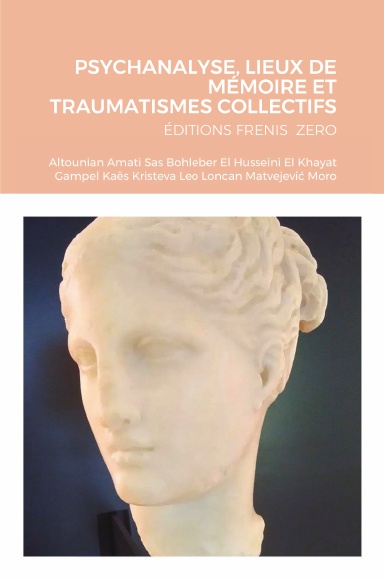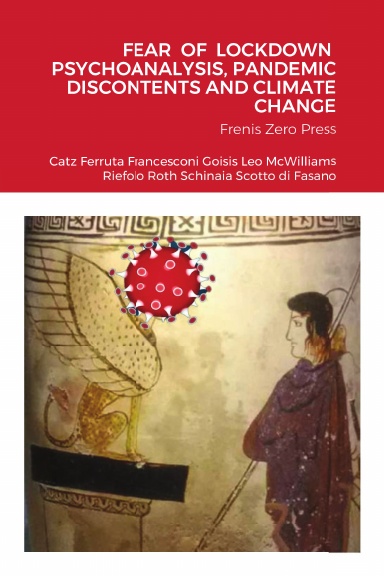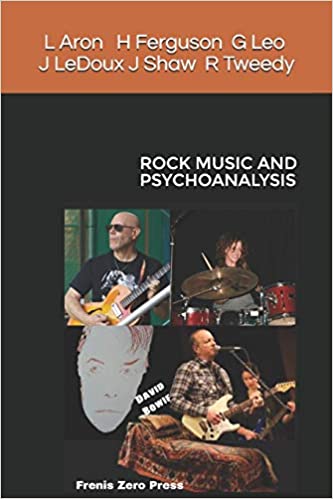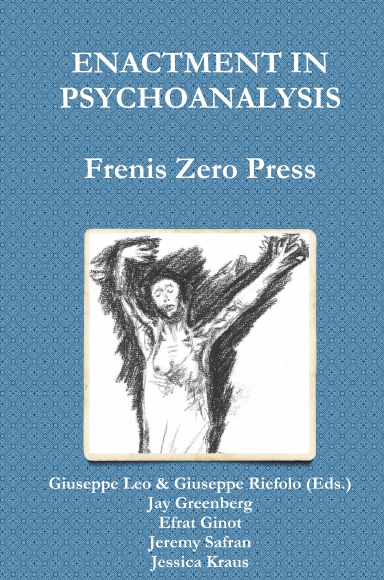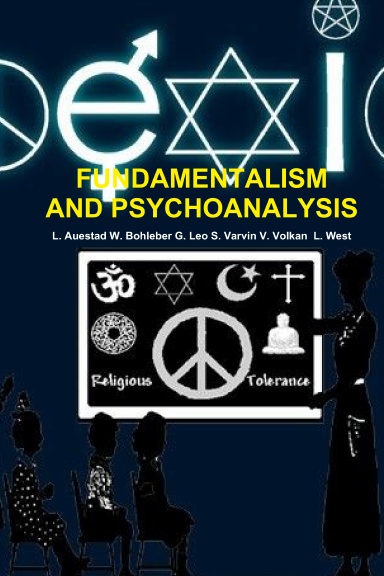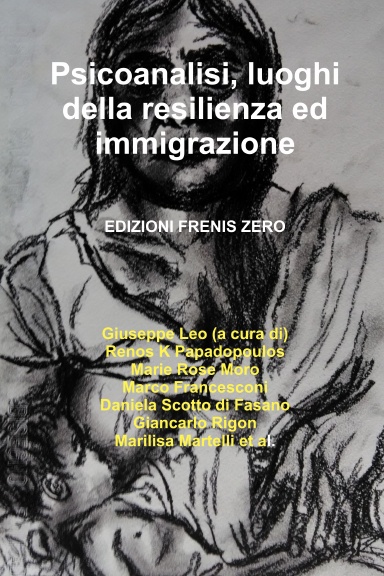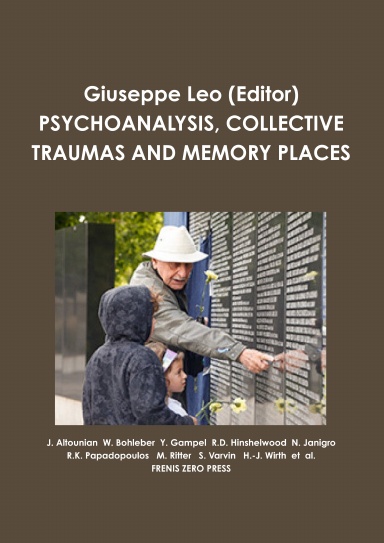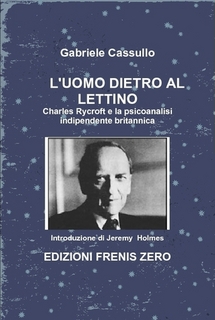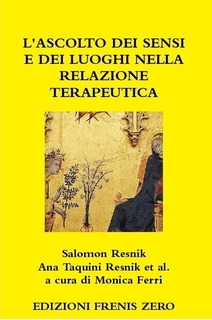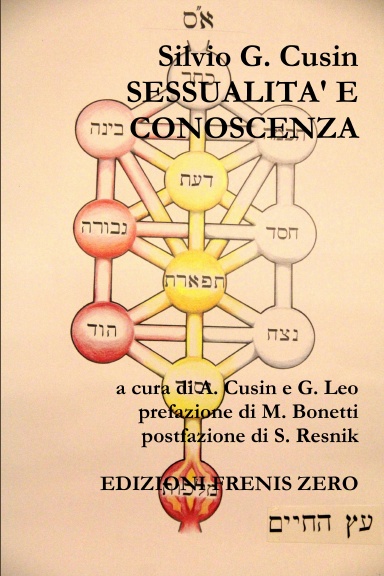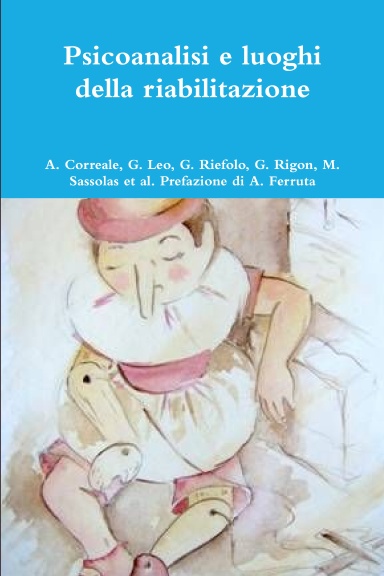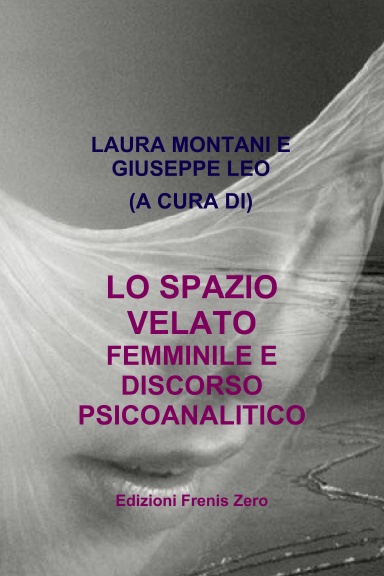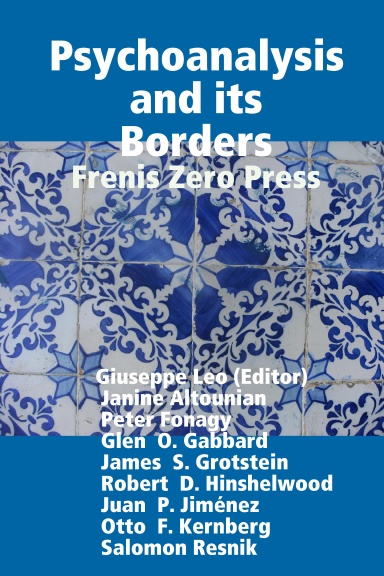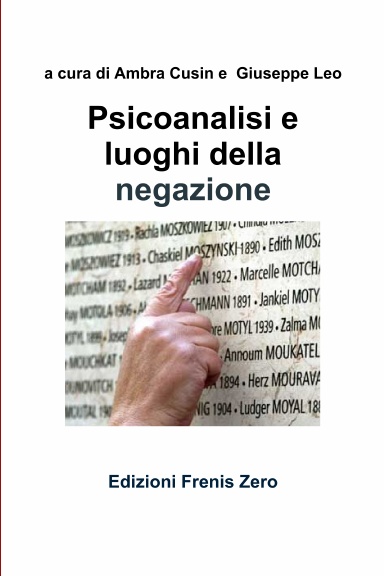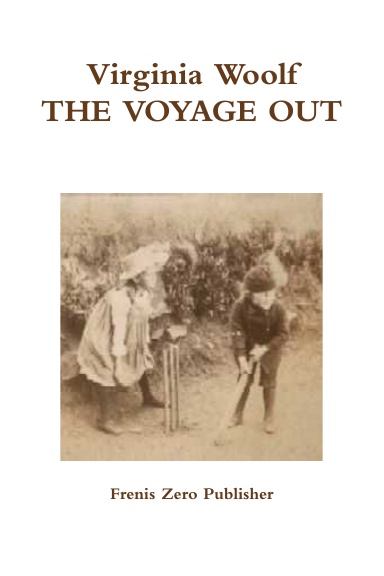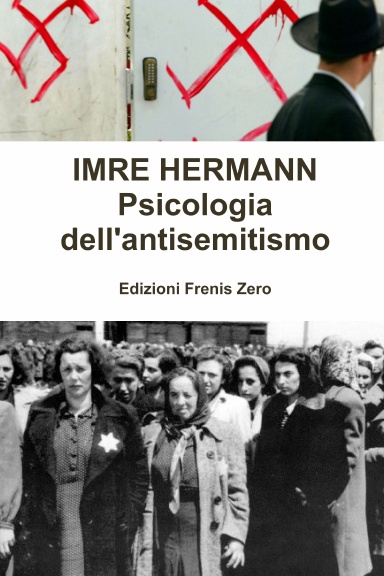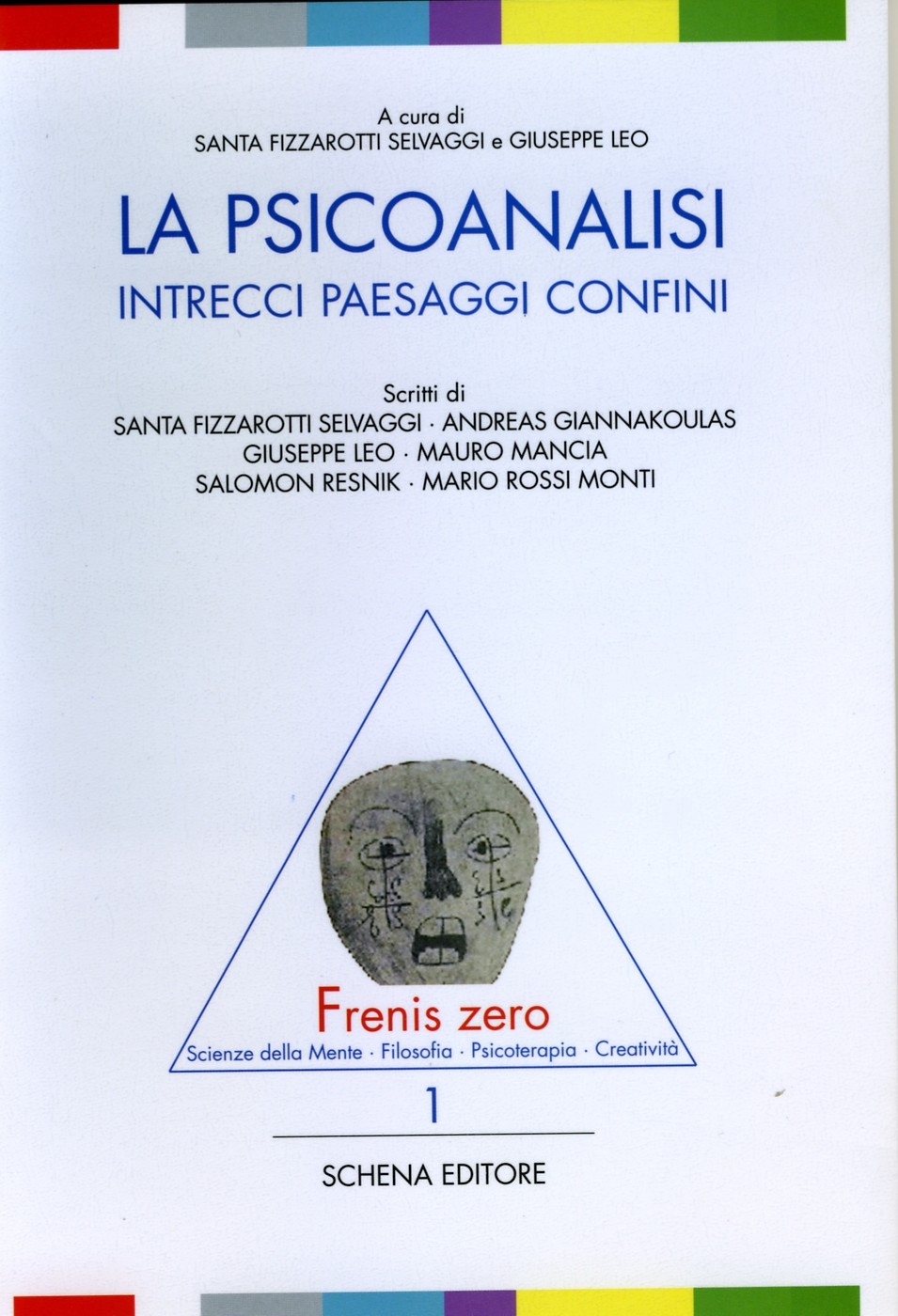|
"...I
think here you are breaking new conceptual ground... I know at the
present moment the idea is fermenting in your head about this 'potential
space', and I can sense its virtue, but I do not think it has quite
achieved true conceptual structure as yet."
M. Khan to D.W.W
17th Feb, 1970
"...
la même notion prend des sens différents, voire opposés, au fur et
a mesure d'un développment. Les différentiations auxuelle cette
notion procede, obligent la signification précédente a se modifier,
à prendre un sens contraire à celui qu'elle avait jusque-là, tout
en conservant quelque chose du sens que l'evolution l'à contraint à
abandonner. C'est ce qui en fait un concept".
A. Green
I.
INTRODUCTION
In
Playing and Reality, a book
published posthumously, Donald Woods Winnicott postulated that
creative playing and cultural experience, including its most
sophisticated forms, take place in "the
potential space between the baby and the mother" (Winnicott
1971, p. 107). In putting forward this deceptively simple idea and
while asking for discussion of its value, he stated very carefully
that the theory he was proposing "does not affect what we have
come to believe in respect of the aetiology of psychoneurosis, or the
treatment of patients who are psychoneurotic; nor does it clash with
Freud's structural theory of the mind in terms of the ego, id,
superego" (Ibid., p. 117).
Nevertheless,
as it gradually has become evident the concept of the potential space
has a deep and troubling epistemological significance. From his
vantage point as a paediatrician and a psychoanalyst Winnicott
succeeded in giving due conceptual relevance to data gathered in a
series of observations carried out in his paediatric practice as well
as in the analytic situation. His understanding of infant development
and his extraordinary attunement to the technical exigencies posed on
the analyst by the so-called difficult patient (i.e. borderline and
psychotic) allowed Winnicott to transcend the mere transcription of
clinical observations onto the discourse of metapsychology. He
ventured into a more ambitious and difficult task: the attempt to
cross-fertilize an experience-near clinical and observational
theorizing and an equally experience-near yet conceptual theorization.
Keeping
the clinical concerns and the analytic setting as key reference points,
Winnicott developed a distinctly personal manner of communicating
"a richly alive experiencing rather than an erudite schematizing"
(Green, 1978, p. 178). His theoretical contributions have become
indispensable practical tools for working out the problems that arise
in the clinical situation. But there is another issue of greater
importance. In a manner of craftsmanship, Winnicott opened up a
conceptual dimension of the highest relevance to contemporary
psychoanalysis.
When
referring to his psychoanalytic beginnings -at a time when "no
other analyst was also a paediatrician"- Winnicott has underlined
how excited he was when he obtained from "uninstructed
hospital-class parents" the confirmation for the psychoanalytic
theories that were beginning to acquire meaning through his own
analysis (1965 [1963]). In 1931, he published his Clinical Notes on Disorders of Childhood, a book on paediatrics
which contained his earliest psychoanalytic insights. Then came the
time of his supervised work with Melanie Klein. Winnicott's personal
account of its significance and influence on his psychoanalytic
development is well known. The whole thing "made sense" and
allowed him to join up his "case-history details with
psycho-analytic theory" (Ibid.,
p. 173).
Winnicott's
written work - from "The manic defence" (1935) onwards -
shows his commitment to remain within the coherence of the Freudian
system. In this respect, it is interesting to recall the review
prepared by him and Masud Khan on Fairbairn's book of 1952. The
reviewers, mindful of the implications of a radical revision of the
Freudian metapsychology, focused on that very possibility. "If
Fairbairn is right, then we teach Fairbairn and not Freud to our
students" (1953, p. 329). Further on in the same review, a
comment signals an aspect of Winnicott's main interest: "Fairbairn
nowhere states how the infant makes the (theoretical) first object".
The final years of Winnicott's career were devoted to the formulation
of an agenda made up of a set of interlocking issues derived from that
main concern. Out of this endeavour germinated the idea on the
potential space.
Now,
is there a privileged moment in Winnicott's conceptualizing when the
notion of potential space came into existence? Read in the light of
its evolution and placed in the context of the British Society it
seems as though two moments were significant for the construction of
such a notion. The first one took form in the description of the
transitional phenomena (1951). These develop out of the "spacial
intimacy" shared by mother and child (Schneider, 1985). The
second moment was adumbrated in "The Use of an Object..."
(1969) and also in "The Use of the Word 'Use'" (1989
[1968]). These researches on the constitution of a place beyond the
range of subectivity demarcate a dimension where the external object
can assert itself through its persistance. Between 1951 and 1969 a
significant shift had occured. However, the novelty of the proposition
was not totally clear under the circumstances.
The
momentous change was intended to be kept in fundamental agreement with
Freudian theory but instead it affected it. It also placed the
researches carried out under Mrs. Klein's inspiration in a new
perspective. Playing and Reality
(1971) shows the evolution towards the idea of the potential space.
Two articles included in the book allow the reader to establish the
turning point. The first is the chapter on the use of the transitional
objects. The second is the chapter on the use of the object. An "implicit"
schema at first, it became explicit through its reflective explication.
There one can follow the transition that "leads to the
construction of a structure which (to use Piaget's words - is
partially new, even though contained virtually in those structures
which preceded it" (Piaget, 1974, p. x).
Besides
this, a careful reading sheds light on a crucial elaboration. The
ideas immanent in the clinical addendum
to the first chapter take shape pari
passu with a growing awareness of the significance of certain
clinical situations (i.e. the denial of separation and the sense of
loss, the negation of remembering, nostalgia, the unreality of
presence and the reality of absence). Processes, in which the attempts
"to turn the negative into a last-ditch defense against the end
of everything" (p. 28) had become pressing clinical issues that
had to be dealt with both from the technical and the theoretical
points of view. This aspect has been discussed with cogency by André
Green in his Travail du négatif
(1993).
Along
with the recognition of the need for a new approach to "the whole
subject" of the roots of aggression" (p. 109), Winnicott
continued to study the significance of the environmental contribution
to the child's development. His clinical work with severely affected
patients sensitized him to the consequences of environmental failure.
Gradually the "environmental provision" and the "facilitating
environment" acquired a decisive importance in his theorizing. By
insisting on the central role which environmental facilitation plays
in psychic development, Winnicott introduced "the parameter of
external reality into treatment" (Decobert, S. 1987 [1984]; p.
XII). That which was conceived as internal entered into to a
dialectical relationship with the environment. The inner world
contained, so to speak, the early environment.
The
hypothesis put forward in the article on transitional objects served
as a sort of trial stage. The inquiry went beyond the complex and
problematic interplay that occurs between the subjective creation of
the object and its presentation. Dealing in the transference with the
absence of an object or its "unreality... in its symbolic meaning"
(1971, p. 26) led Winnicott to postulate that the attempts at
destroying the object, parallel to the subjective destruction of its
representation have as the necessary condition for its persistance in
objective reality the survival of the object.
After the paper of the use of the object, Winnicott arrived at a
momentous insight. Now - 25 years after the publication of Playing
and Reality - it may be stated in its simplest form in this
fashion: creative illusion is as vital to the subjective existence of
the presented object, as destructive illusion is to its being placed
outside omnipotent subjectivity. The dialectics between two sets of
paradoxes, one superimposed on another, define the boundaries of the
potential space. Subjective creation and subjective distruction are
both necessary to the acceptance of subjectivity and
of reality.
II.
THE FOUNDATIONS OF THE
POTENTIAL
SPACE
Clinical
Notes on Disorders of Childhood
written "from the heart of a clinican rather than from the brain
of a library student", signalled the beginnings of Winnicott's
journey "from paediatrics to psychoanalysis". Seen in
retrospect, it played for Winnicott's intellectual career the same
role the Project... played
for Freud or The Psychoanalysis
of Children played for Melanie Klein. It was a sort of blueprint
for later developments. Starting from neurology, Freud had set out to
define the identity of psychoanalysis, Melanie Klein took it for
granted and applied it to her work with children, Winnicott went in
its search looking for it within the nursing couple.
An
issue with which epistemologists, philosophers and psychoanalytic
theorists have made their task to confront us is that theories are
often shaped by fiction. It is said insistently nowadays that theories
are based on fictions rather that on foundations. Freud based his
theory explicitly on "the fiction of a primitive psychical apparatus" (Freud S.E.V p. 598 ). M. Klein postulated an ego which
"introjects objects 'good' and 'bad' for both of which the
mother's breast is the prototype...( )". Winnicott based his
theorizing on the fiction implicit in "there is no such thing as
a baby" ( ).
In
elaborating the consequences deriving from his basic fiction,
Winnicott held on to his paradoxical manner of being original. The
controversies around the issues concerning the notion of internal
objects, the nature of phantasy, the emotional life of the infant, the
role of projection and introjection, and the origins of the superego
were decisive in shaping the Freudian legacy as it was being developed
in the British Psycho-Analytical Society (King & Steiner,1991).
Winnicott rooted his work and researches - influenced as they were by
Melanie Klein - firmly within the Freudian tradition. In the interplay
between the clinican and the theoretician Winnicott was consequent
with the spirit of his thinking. He used theory. Theory survived. In
the process it acquired a subjective imprint.
The
notion of the potential space was developed in its essential aspects
from the ideas put forward in
statu nascendi in his 1951 paper. The issues that hinged around
the transitional objects, space and phenomena had led Winnicott to
postulate the key role of illusion. This left open the problem of
subjective omnipotence. The paper on the use of the object dealt with
it. By including his 1951 paper as the first chapter of Playing
and Reality Winnicott was not only reinstating his own original
hypothesis and starting point but was indicating the need to
critically review it. Winnicott's inquiry did not start from the
subjective. It consisted of "a journey from a state prior to the
differentiation of subjectivity to a state when subjectivity comes
into being" (Loewald, 1988; p. 72).
Insofar
as he was trying to metaphorize his clinical experience of such
journey in writing he had to proceed to its cognitive elaboration. A
theoretical psychoanalytical text, it has been argued, conveys meaning
"through the invention
of a clinical and conceptual
vocabulary" and by the construction of verbal propositions
arranged "into a logical discourse and into a unitary literary
structure" (Merendino, 1992, p. 23). Winnicott's writing, close
to the emotional climate of the actual analytic experience conveyed
its symbolic significance through the use of personal metaphors. These
seem to allude to a theoretical
standpoint - a more or less stable system of ideas - influenced by his
own empathic and countertransferential predisposition.
The
potential space he insisted "is not inside
by any use of the word... nor it is outside, that is to say, it is
not part of the repudiated world, the not-me, that which the
individual has decided to recognize (with whatever difficulty and even
pain) as truly external, which is outside magical control"
(1971c, p. 41). The notion was postulated "In order to give a
place to playing" (ibid. 1974 [1971] p. 47). "Confidence in
the mother makes an intermediate playground here, where the idea of
magic originates, since the baby does to some extent experience
omnipotence... The playground is a potential space between the mother
and the baby or joining mother and baby" (Winnicott 1974 [1971],
p. 56).
In
his theoretical statements about playing, Winnicott was aiming at a
definition more in consonance with the transformations he had
impressed in his practice. Yet the attempted definitions do not seem
to include explicitly the effects of the travail
du négatif. Of course this refers to what Winnicott acknowledged
as the "difficult part of my thesis, ......." (1974 [1971],
p. 107). It is as though the bearings of the second paradox, which
accounts for "the actual survival of cathected objects that are
at the time in the process of becoming destroyed because real,
becoming real because destroyed" (1974 [1971], p. 106) had not
found out its way into the definition of the potential space. In other
words, the shift punctuated by the paper on the use of an object had
not sufficiently modified the verbal formulation of the notion of
potential space.
However,
Winnicott qualified and defined the space he was referring to by using
the word "potential". As an adjective, it implies potency in
contradistinction to act. Therefore, it indicates that something may
or might act or exist but does not act or exist now. As a grammatical
mood it expresses possibility. Winnicott was alluding to a space in
which there was the potentiality or the capacity of being or being in
such manner. The question of time was incorporated into the spaciality
of the space. The references to potential space are pregnant with
potentialities of meaning.
By
linking the words "potential" and "space",
Winnicott went beyond a mere figure of speech. He defined a
theoretical locus where the dynamic transcription of the initial
transitions, out of which self and object appear could be contained.
The formulation keeps the essential tension proper to a notion meant
to hold together a complex array of meanings which pervade and
transcend the phenomenological boundaries. And yet it had to avoid
obscuring the value of a descriptive rendering of the experiences
involved. By substituting "space" for "area" and
then "potential" for "transitional", Winnicott
defined a conceptual field, both in terms of the transitions that may
take place in it and of the limits to those transitions.
As
he continued to explore and consequently to theorize, Winnicott
developed a complex structure of ideas always in close contact with
experience. Intuition, observation, inference and argument were
closely interwoven. In communicating his researches he used his own
words, his personal idiom. He faced the task without seeking to
dismantle the metapsychological edifice. Also in presenting his
argument Winnicott became the theoretical exponent of his own clinical
stance. The process led to the postulation of the notion of potential
space, which included and went beyond the conceptual field that was in
process of definition through the ideas of hesitation, primary
maternal preoccupation, illusion, transitional objects and phenomena
and object usage (1941, 1951, 1956, 1969).
At
this point a comment on Winnicott's use of language is necessary. His,
is the language of the immediacy of sensation and experience, rooted
in an intimate assertion of their priority over more abstract
qualities of consciousness. His language is founded in the attempt to
make the symbolic dimensions of the words coincide with their material
reference in a sort of verbal replica of his methodological approach.
In writing about the difficulties that the works of Winnicott pose for
the translator, Pontalis emphasizes that these go beyond the formal
rendering of meanings, they had to do with that which "goes
without saying, what the author sees as obvious, something rooted both
in his maternal language and in the ground of his thinking" (Pontalis,
J. B., 1981 [1972], pp. 148-149).
Ogden
has commented that in Winnicott's writing, meaning comes from the
texture of form and content. The metaphors and paradoxes with which
Winnicott presents his ideas result in "a peculiar combination of
clarity and opacity". Therefore, it is difficult "to find
words of one's own to discuss the extremely complex set of ideas that
Winnicott has managed to condense into his deceptively simple highly
evocative metaphorical language" (Ogden 1985, p. 130). From this
results that the popular appeal of his ideas "has also insulated
them from systematic exploration, modification and extension"
(ibid. p. 130). On the other hand, Winnicott's way of conceptualizing
his insights has also suffered several modifications when traversing
the different "meaning spaces" (Sandler, 1983) provided by
the diverse psychoanalytical institutional settings.
The
topics discussed by Winnicott are at the forward edge of current
psychoanalytic thinking. Some unavoidable epistemological ambuigity
accounts for what has been thought as his "theoretical unclarity".
In a panel held at the American Psychoanalytical Association,
Winnicott's concepts were defined as "metaphorical", "enigmatic",
"elusive", "indeed 'transitional' in nature" and
his writings as consisting of "compelling catchwords and
aphorisms" and stressing "verbs, motion and 'transition'
". The panelists considered that most of Winnicott's concepts are
situated "at the blurred boundaries of the internal and external
fantasy and reality" (Panel,1993 p. 230).
On the other hand, Winnicott's use of verbal nouns, gerunds and
infinitives has been considered a way of reproducing a paradoxical and
mobile reconciliation between change and permanence, proper to psychic
experience (Casas, 1995; Khan, 19 ; Phillips, 1988).
Recently
the Editor of the International Journal of Psycho-Analysis has
insisted on the need for a "psychoanalytically
informed way of learning from psychoanalytic
experience" (Tuckett, 1995, p. 655) In his own very personal
way and without submitting to the limitations of a standardize style,
Winnicott completed his own personal search by adequating his strategy
for communication to his methodology for psychoanalytic enquiry. In Playing and Reality the elucidation and communication of the
problems raised by the clinical situation was placed in relation to a
very demanding effort at theorizing. Events and processes, observation
and theory, evidence and inference appear in a new perspective.
III.
THE BEGINNINGS OF THE POTENTIAL
SPACE
The
exploration of the earliest phases of development and the registration
of the subtle complexities of the transferential movements in the
analyses of narcissistic and schizoid patients, provided the raw
materials for Winnicott's contributions to the theory and practice of
psychoanalysis. Fraught as it was with difficulties and ambiguities,
this dual task allowed for a glimpse of the emergence of the
constitutive dynamics of the inner world as perceived from the
intersubjective perspective.
The
Cartesian separation between subject and object gravitated heavily on
psychoanalytic theory and technique. Freudian metapsychology based on
the fiction of a primitive psychic apparaturs tending towards
discharge may account for it. Yet there was another model in Freud's
theorization according to which "one mind is inherently
interpersonal in its very structure" (Cavell, 1988; p. 860).
Winnicott's ideas on the transitional phenomena and on object usage
were conceived at the point of convergence and divergence of those two
models. Thus, the notion of the potential space appeared between the
domains of the intrapsychic and the intersubjective.
In
tracing those elements out of which the potential space comes to be
what it is, one has to start from a state prior to the differentiation
between these two domains. The mother child unit conforms a sort of
homogeneous psychic field (Loewald, 1971; Ogden, 1985). The potential
space corresponds to the logical, hypothetical moment when it is
occurring the transition from the primary maternal
preoccupation--primary narcissism unit to its differentiation.In
Winnicott's conception this moment requires of the growing capacity of
the child to enter in a dialectic of oneness and separateness thanks
to mother's facilitation. In more classical terms, it requires the
building up of object representations by the infant in mother's
alternating presence and absence.
Once
stated, the linearity of the argument seems to miss the subtle
interplay, the to and fro of this dual perspective. Taking into
account that at the beginning there was the field in which the
emergence of subject and object may take place and keeping in mind the
paradoxical, processual and relational mature of Winnicott's thinking,
let us start with some aspects of what one may call the contribution
of the mother to the construction of the potential space.
In
a paper written immediately after the Freud-Klein controversies,
Winnicott (1945a) underlined "the importance of the maternal
holding environment for the fruition of ego-funcions and processes in
the psyche of the infant" (Khan 1974, p. 262). Several years
later, focusing on "the function of the mother at
the earliest phase" of
the infant's development, Winnicott described a state of "heightened
sensitivity", a "normal illness", which allows mother's
adaptation to the infant's needs at the very beginning: the primary
maternal preoccupation. A beautiful rendering of this is given by the
absorbed expression of the Madonna del Parto by Piero della Francesca
(Gaddini, 1995). It is in this setting provided by mother that the
" 'infant's constitution' begins to make itself evident" (Winnicott,
1956).
This
psychological condition permeates all aspects of maternal care. In
that which concerns the topic of this paper it is convenient to refer
in some detail to that particular aspect denoted by the term holding.
Winnicott made it clear that it implies the total environmental
provision "prior to the concept of living
with". Holding, thus, "refers to a three dimensional or
space relationship with time gradually added" ( Mat. Proc.p.43). Progressively it shifts to handling and object-presenting.
Mother's
capacity for recognizing and allowing the "gift gestures"
implicit in the spontaneous gesture of the infant facilitates not only
the expression of his creative potential but also the development of
his capacity for concern (1948, 1954, 1958, 1963). Besides, under
certain condition of mothering - mother's own survival capacity, her
acceptance of the infant's potency - the infant will be able to
experience "true guilt, since implanted guilt is not true to the
self" (Winnicott, 1955, p.95). In other words, mother has a key role in facilitating
the infant's disposition to achieve the capacity for concern in the
normal development.
Now,
let us turn our attention to the gradual development of the infant's
capacity to confer potentiality to the space. The natural point of
departure is the moment when the maturational processes release the
various ego and id apparatuses at the same time as the ego nuclei and
self-representations gather into some sort of subjective self. The
infant becomes "a person with a limiting membrane, with an inside
and an outside". Through "the experience of the mother
holding the situation" the individual child acquires an internal
environment. It is only once the holding environment is internalized
that the spontaneous gestures and the child's potential for the
development of a guilt sense have a subjective meaning (p. 270 The Dep.
pos. in Normal dev. Mat. Proc).
The
contributions of the mother and of the child meet in the transitional
area. More exactly, it is only within this space that mother and
child's contributions are discernible. This is so since it is out of
the care of the mother and the play between her and the child that his
experiences of union and differentiation emerge. From the infant's
perspective the transitional phenomena span over autoerotism and
object-relatedness. In primary narcissism - writes Winnicott - the
environment is holding the individual, and at
the same time the individual knows of no environment and is at one
with it" (Metapsych., p. 283). The accent is placed on the absolute dependence
of the infant rather than on its helplessness.
Hence,
the very nature of the infant's needs had to be revised "in a
framework of ego-relatedness". The infant's body needs through
the imaginative elaboration of physical experience facilitated by
mother's primary maternal preoccupation, gradually become ego-needs.
It is within the consistency of the mother's care that insinctual
satisfaction is possible and self-enriching. The subtlety of the
rapport between the mother and her infant within the space between
them consitutes the medium in which the potentiality of the self comes
into being.
To
establish this theoretical articulation and to define the "substance"
of the psychological tie developed out of the spacial intimacy of
mother and child (Winnicott, 1951) Winnicott, in consonance with
Marion Milner, gave a particular turn to the term "illusion".
Departing from "the illuministic rationalism" of Freud, he
gave it "a new connotation and elevated it to the rank of a
fundamental concept in psychoanalytic theory and practice" (Kluzer
Usuelli, 1992, p. 179). As Ogden has pointed out, Winnicott refers to
two quite dissimilar phenomena (Winnicott, 1948; 1971). In the first
case he alludes to "the illusion of the subjective object".
Mother and child share an intermediate space; her empathic
responsiveness "protects the infant from premature awareness of
himself and of the other". This illusion provides a protective
insulation for the infant without isolating him. The second usage of
the term illusion refers to that which "fills potential
space": the experience of oneness and separateness "coexist
in a dialectical opposition" (Ogden, 1985, n. 1, p. 131).
Winnicott
distinguished between excited and unexcited states in the infant. The
excited periods have to do either with the satisfaction of the
instinct or its warding off but also with keeping them alive in
preparation for their eventual satisfaction. The unexcited periods
occur when mother and child are in quiet union, or during activities
unrelated to instinctual pressure. Although holding "coincides
with the infant's instinctual experiences that in time will determine
object relationships, it is initiated prior to them" (Winnicott).
The period of hesitation, partaking of excited and unexcited qualities
is, precisely because of this, "the matrix for the emergence of
the area of illusion" (Masud Khan 1974, p. 262).
Winnicott's
capital insight has to do with his defining "not so much an
object as a space lending itself to the creation of objects"
(Green, 1978 p. 177). It is true that the psychoanalytic meaning of
the term object and its different uses remain in need of clarification.
In this particular instance it has to do with the creation of an
internal experiential structure related to something which is becoming
external to the subject.
There
is no insoluble contradiction in affirming at the same time the
coexistence of primary narcissism and precocious relations with
objects. This does not imply that the object does not exist. Yet, on
the one hand, the other is not yet constituted (Lacan). On the other
hand, though the object exists before it is lost it is "its very
loss... what determines its existence as such (A. Green 1978, p. 188).
This seems to be what is implied in Winnicott's assertion "it is
not the object, of course, that is transitional" (Playing and
Reality, p. 17 [1971] 1979).
The
transition which makes possible object-relating is brought about by
mother's function of object presenting. She holds the baby with that
aspect of her that remains not identified with him. In so doing she
makes her presence known in an unobtrusive way. Therefore, the mother
as object does not have to be denied by the infant. This is then the
period of the budding awareness of separateness. It has been the locus
where Winnicott placed the potential space (W., 1951, p. 4; p. 132
from Ogden, Kluzer Usuelli, Marion Milner 1952, 1971 p. 29, "On
sublimation" H: Loewald S: Freud SE XXI p. 17, 18, 28 and ff. ).
From
then on it is possible - both from the point of view of the infant and
from the requirements of theory to find and define inner and outer
reality. The movement from absolute dependence to relative
independence coincides with the establishment of this definition. The
last problem that remained was that of how the object is placed beyond
the confines of subjectivity. The infant's aggression born of its zest
for life is what "makes the infant need and external object, not
merely a satisfying object" (Phillips, 1988, p. 112).
IV.
TOWARDS A DEFINITION OF THE
POTENTIAL
SPACE
Up
till now the emphasis has been placed in drawing some lines of thought
in Winnicott's theoretical work. His ideas occurred to him "while
engaged in clinical work". The demands of patients, particularly
of those seeking help in regard to their "primitive
pre-depressive relationships to objects" made him not
underestimate the conflictual nature of human minds. The theory he
formed "for his own benefit" was there to be destroyed in
order to see if it could survive. That was Winnicott's manner of
relating to himself and to the clinical experience. The
psycho-analytic setting provided the crucible where theory was tested.
Between his theory and his clinical work and between technique and
therapy remained a space to allow for the privacy of encounter.
Winnicott's
preoccupation with gaps of time, spaces between, phases of nonsense,
moments of hesitation, places of submergence and emergence found
expression in his idea of the potential space (Milner, 1978). Placed
between creativity and the capacity for concern, its definition
required bringing together some basic notions and specifying some
clear differentiations. It had started from the notion of the
transitional object conceived within an evolutionary perspective. Then
it went through a dialectic that respected the value of paradox and
the potential implicit in its being tolerated and accepted as well as
submitted to the travail du négatif
(Rousillon, 1991; Green, 1991). Thus, the concept of the potential
space made it possible to confront in the psychoanalytic setting the
absence of an object with the unreality of it "in its symbolic
meaning" (Winnicott, 1971, p. 22).
The
importance of the Zwischenreich
- the intermediate realm - in Freud's inaugural formulations has been
made clear by Masciangelo (1990). In a Congress, Bertolini (1997) has called our attention to Freud's references to an intermediate
field of experience. In the atmosphere of the British Society, Melanie
Klein's researches as well as Fairbairn's views on psychic structure
had opened an extraordinary set of perspectives. But this also had an
unwelcome consequence: the object cast its shadow upon
psychoanalytical theory and technique. In some quarters the
object-relations theory became the dominant, if not the exclusive
paradigm. There was little room left for the intermediate realm and
the Zeitgeist contributed to
put aside the value of the private and silent aspects of psychic
experience. By proposing the notion of a potential space it was
possible to restitute the importance of the intermediate realm and to
revalue the privacy of the self.
We
began this part of our paper by saying that theory has to survive the
impact of the clinical situation. A brief vignette may permit to
discuss the value of these ideas in the psychoanalytic setting.
After
the third year of analysis, a forty years old male patient began to
talk significantly about his father. One day, while lying down, he
took from his breast pocket, near his heart, a photograph of him as a
baby in his mother's arms, reaching towards his father, and offered it
to the analyst. While the analyst held it, since he had decided to
hold it for the rest of the session and return it at the end, the
analyst told him that he realized that he, the patient, had entrusted
him with something important, something he had taken to heart, maybe
even something that had remained suspended inside him. The patient was
moved. It was possible for the analyst to link two previous dreams
with the photograph and with the patient's loving and aggressive
feelings towards him. The patient's need to be helped and held by the
analyst like a father in order to separate him from the mother was
verbalized.
It
has to be stressed that there was a period of hesitation on the part
of the analyst before deciding to hold the photograph which
corresponded to the patient's hesitation in giving it to him. The
sense of distance was thus kept. The patient gave the impression of
being engaged on the borderline between fusion, that is primary
identification with the primary object, the mother, and getting lost
in it, and separateness, namely his need to detach himself from the
primary object through the analyst intervention. The period of
hesitation provided the space in which the transition could happen.
The fact that two preceding dreams were reworked in this connection
indicates that the episode of the photograph not only started the
recovery of a frozen memory but was the starting point of a deep
transformation. While the analyst was keeping the patient's picture in
the actuality of the situation, the original experience found new and
active life. In the vicissitudes of transference and
countertransference, aggressive feelings related to his love for the
analist were expressed.
Discussing
Melanie Klein's ideas on how the dread of the original object, as well
as the fear of its loss, leads the infant to search for a substitute,
Marion Milner has stated that for her the term 'primary object' refers
to a fusion of self and object (Milner, 1987). In this sense, one may
say that in spite of his claims to the contrary, Winnicott was also
referring to the first object of an object-relationship. The dread of
the maternal object felt by the patient to be fused with himself as
well as the fear of losing it were both contained through the holding
of his infantile aspects as well as by the opening of a way to reach
the father.
Whereas
this part of the session has to do with the role that parental holding
plays in allowing the processes that lead to self fruition, the
inevitable ending of the session marked the limits of the temporal
spatial frame where the creative illusion was taking place. That
happened outside the subjective control of the patient. This could be
an example of how the dialectics between two sets of paradoxes, one
superimposed on another, define the boundaries of the potential space.
The experience of being held created the illusion of being united with
the analyst and maintained the denial of separateness. The end of the
session made for the subjective of the object. Let us insist: creative
illusion is as vital to the subjective existence of the present object,
as destructive illusion is to its being placed outside omnipotent
subjectivity.
As
much as the infant has the need of an external object for the sake of
its externality and not just of a satisfying object which could be
merely subjective, the patient needs to have the analyst beyond his
subjective grasp. It is crucial to underline here the difference
between object relating and object usage. This contribution of
Winnicott (1971) is, in our opinion, as significant now as Freud's
paper on negation has been since the 1920's. On the one hand, it
contains the metapsychological basis for a close scrutiny of the
stages in the constitution and development of the object. On the other,
Winnicott's concept of the use of an object is an essential tool for
the clinician (Casement, 1985).
The
fragment we presented may also call for the exploration of the
complicated and controversial topic of the roots of symbolism in time
and its relation to the potential space. In Winnicott's view, when
symbolism is employed, "the infant is already clearly
distinguishing between fantasy and fact, between inner objects and
external objects, between primary creativity and perception".
There is a use for the term transitional object that gives room for
the process of becoming able to accept difference and similarity, in
other words, for a term that may account for the roots of symbolism. A
term that may describe the infant's journey from the purely subjective
to objectivity and also towards experiencing (cf. Winnicott, 1968).
The
photograph, in this case, seemed to have had some sort of concrete
quality to it. It was as though it represented a frozen experience.
Therefore the patient was not able to make a symbolic use of it nor, a fortiori, of the parental couple. It was a merely subjective
object and therefore uncapable of being used. The time of hesitation
provided and sustained a new possibility. The concrete experience
started to move towards a more fluid and uncertain status.
As
Marion Milner has pointed out, the idea of the potential space has
some sort of visual connotation. This of course, raises all sorts of
questions about the functions of images and their role in the
structuring of the self. The potential space gives room to the
re-definition of non verbal configurations of optical, auditory,
kinaesthesic, tactile or olfactory systems in which the parts may even
conflict with each other. Whereas one has to be aware of the
possibility of unduly stressing "the phenomenology of the spacial
metaphor" (Fédida), these are issues that are challenging
"the status of psycho-analysis as a science and as a professional
discipline" as Sutherland stated almost a decade ago.
Insofar
as the clinical situation is concerned the implications of the idea of
potential space for psychoanalytic technique have still to be worked
out. Renik (1995) has written on the to and fro between the
intrapsychic and intersubjective as essential to our work. For Green
it is the placing in relation of the two polarities intrapsychic and
intersubjective "what will constitute the essence of the travail
du négatif". One may say that the potential space defines a
field where emergent processes both of the self and of the object
occur and where transitions between the intrapsychic and the
intersubjective take place.
Psychoanalysis
is a sophisticated form of cultural experience. It explores the roots
and vicissitudes of symbolism; also its limits. Although we do not
have an unequivocal definition of the potential space, it is clear
that it meant a theoretical development of great import. It brought
the ideas contained in the paper on the transitional object to a
different status. The "new conceptual ground" was there to
take the place of the transitional space. No wonder that Winnicott
hesitated in front of the very idea. The potential space does not mean
that the internal and external realities are mixed or rolled into one.
On the contrary, the concept allows to problematize the issue posed by
polarities that have often been either confused or conceived in terms
of radical opposition.
This
year - 1997 - the centenary of another great psychoanalytic thinker is
commemorated. Wilfred Bion made an important part of his task to help
us to be capable of learning from the experience. Donald Winnicott
provided us with the possibility of - to use Marion Milner's telling
phrase - "learning how to experience to the full".
REFERENCES
Bion, W. (1967) Second Thoughts.
London, Heinemann.
Casement, P. (1985) On learning
from the patient. London, Tavistock.
Cavell, M. (1988) "Interpretation, psychoanalysis, and the
philosophy of mind". JAPA,
36: 859-879
Clancier, A. & J. Kalmanovich (1987) Winnicott and Paradox: from birth to creation. London, Tavistock.
Decobert, S. (1987 [1984]) Preface to Winnicott and Paradox: from birth to creation. London, Tavistock.
Freud, S. (1900) The interpretation of dreams, S.E. 4-5
-
(1911) Formulation on the two Principles of
Mental Functioning, SE 12
-
(1925) Negation, SE 19
Gaddini, R. (1995)
"Sullo spazio potenziale", IPSI, Riunione scientifica del 25
Aprile.
Giannakoulas A.
(1992) Review of La Nascita del
sé, Ed. M. Ammaniti, Int. Rev. of Psycho-Anal. 19; 109-110
Green, A. (1978) Potential Space in Psychoanalysis: The object in the
setting. In Between Reality and
Fantasy. Transitional Objects and Phenomena. Ed. Groelnick et al. New York, J. Aronson.
Green,
A. (1993) Travail du Négativ.
Paris, Minuit
Grinberg, L (1995), "Psychic Reality: Its Impact on the
Psychoanalyst and on the Patient Today". Int. J. Psycho-Anal. 76: 1.
Khan M.M.R. (1974) "The Role of Illusion in the Analytic Space and
Process". In The Privacy of
the Self. London, Hogarth.
Klauber, J. (1981) "The role of illusion in the psychoanlaytic
cure" In: Dimensions of
Psychoanalysis, ed. J. Sandler. London, Karnac Books, 1989; pp.
165-177.
Klein M. (1935) "A contribution to the psychogenesis of
manic-depressive states", in The
writings of Melanie Klein, vol.1, pp. 262-289
Kluzer Usuelli, A. (1992) "The significance of illusion in the work
of Freud and Winnicott: a controversial issue". Int.
Rev. Psycho-Anal. 19:179.
Loewald, H.W. (1988) Sublimation. New
Haven and London, Yale University.
Masciangelo, P. M.
(1990) "Sogno-oggetto, oggetto del sogno e modello "tra
due" dello Zwischenreich". Gli argonauti, 47: 267.
Michels, R. (1985) Introduction to panel: perspectives on the nature of
psychic reality. JAPA, 33:
516-521.
Milner, M. (1952) The Role of Illusion in Symbol Formation, in (1987) The
Suppressed Madness of Sane Men. Tavistock Publications, London and New
York
-
(1971) On not being able to paint. London, Methuen.
Ogden, T.H. (1985) "On potential space". Int. J. Psycho-Anal. 66: 129.
Panel (1993) The Clinical Relevance of the Contribution of Winnicott.
Reported by John Munder Ross. JAPA
41, 219-235
Phillips A. (1988) Winnicott, Fontana Press, London
Piaget, J. (1974) Preface to Darwin
on Man: a Psychological Study of Scientific Creativity by Gruber,
H. E., New York, E.P. Dutton & Co.
Pontalis, J. B. (1982
[1972]) "Encontrar, acoger, reconocer lo ausente".
Introducción a Realidad y juego.
Winnicott 1982 [1972]
Schneider, L. (1985) "The theme of mother and child in the art of
Henry Moore. In: Psychoanalytic
Perspectives in Art. Ed. M. Mathews Gedo. New Jersey and London,
The Analytic Press.
Shapiro, T. (1994) "Psychoanalytic Facts: From the Editor's
Desk". Int. J. Psycho-Anal.
75: 1225
Treurniet, N. (1993) "What is psychoanalysis now?". Int.
J. Psycho-Anal. 74: 873.
Tuckett, D. (1995) The Conceptualisation and Communication of Clinical
Facts in Psychoanalysis, Int. J.
Psycho-Anal. 76, 653-662
Winnicott D.W.W. (1955), "The Depressive Position in Normal
Emotional Development", in British Journal of Medical
Psychology, vol. XXVIII, pp.89-100.
- (1963) "A personal View of the Kleinian
Contribution" in 1965 The
Maturational Processes and the Facilitating Environment. London,
Hogarth; pp. 171-178
-
(1971) Playing and Reality. London, Tavistock.
-
(1968) Comments on My Paper "The Use of an Object",
in (1989) Psycho-Analytic Explorations, ed. C. Winnicott, R. Shepherd,
and M. Davis, London: Karnac Books.
- (1968)
The Use of the Word "Use", in (1989) Psycho-Analytic
Explorations, ed. C. Winnicott, R. Shepherd, and M. Davis, London:
Karnac Books
XXXXXXXXXXXXXXXXXXX XXXXXXXXXXXXXXXXXXX XXXXXXXXXXXXXXXXXXX XXXXXXXXXXXXXXXXXXX XXXXXXXXXXXXXXXXXXX XXXXXXXXXXXXXXXXXXX XXXXXXXXXXXXXXXXXXX XXXXXXXXXXXXXXXXXXX XXXXXXXXXXXXXXXXXXX XXXXXXXXXXXXXXXXXXX XXXXXXXXXXXXXXXXXXX XXXXXXXXXXXXXXXXXXX XXXXXXXXXXXXXXXXXXX XXXXXXXXXXXXXXXXXXX XXXXXXXXXXXXXXXXXXX XXXXXXXXXXXXXXXXXXX XXXXXXXXXXXXXXXXXXX XXXXXXXXXXXXXXXXXXX XXXXXXXXXXXXXXXXXXX XXXXXXXXXXXXXXXXXXX XXXXXXXXXXXXXXXXXXX XXXXXXXXXXXXXXXXXXX XXXXXXXXXXXXXXXXXXX XXXXXXXXXXXXXXXXXXX XXXXXXXXXXXXXXXXXXX XXXXXXXXXXXXXXXXXXX XXXXXXXXXXXXXXXXXXX XXXXXXXXXXXXXXXXXXX XXXXXXXXXXXXXXXXXXX XXXXXXXXXXXXXXXXXXX XXXXXXXXXXXXXXXXXXX XXXXXXXXXXXXXXXXXXX XXXXXXXXXXXXXXXXXXX XXXXXXXXXXXXXXXXXXX XXXXXXXXXXXXXXXXXXX XXXXXXXXXXXXXXXXXXX XXXXXXXXXXXXXXXXXXX XXXXXXXXXXXXXXXXXXX XXXXXXXXXXXXXXXXXXX XXXXXXXXXXXXXXXXXXX XXXXXXXXXXXXXXXXXXX XXXXXXXXXXXXXXXXXXX XXXXXXXXXXXXXXXXXXX XXXXXXXXXXXXXXXXXXX XXXXXXXXXXXXXXXXXXX XXXXXXXXXXXXXXXXXXX XXXXXXXXXXXXXXXXXXX XXXXXXXXXXXXXXXXXXX XXXXXXXXXXXXXXXXXXX XXXXXXXXXXXXXXXXXXX XXXXXXXXXXXXXXXXXXX XXXXXXXXXXXXXXXXXXX XXXXXXXXXXXXXXXXXXX XXXXXXXXXXXXXXXXXXX XXXXXXXXXXXXXXXXXXX XXXXXXXXXXXXXXXXXXX XXXXXXXXXXXXXXXXXXX XXXXXXXXXXXXXXXXXXX XXXXXXXXXXXXXXXXXXX XXXXXXXXXXXXXXXXXXX XXXXXXXXXXXXXXXXXXX XXXXXXXXXXXXXXXXXXX XXXXXXXXXXXXXXXXXXX XXXXXXXXXXXXXXXXXXX XXXXXXXXXXXXXXXXXXX XXXXXXXXXXXXXXXXXXX XXXXXXXXXXXXXXXXXXX XXXXXXXXXXXXXXXXXXX XXXXXXXXXXXXXXXXXXX XXXXXXXXXXXXXXXXXXX XXXXXXXXXXXXXXXXXXX XXXXXXXXXXXXXXXXXXX XXXXXXXXXXXXXXXXXXX XXXXXXXXXXXXXXXXXXX XXXXXXXXXXXXXXXXXXX XXXXXXXXXXXXXXXXXXX XXXXXXXXXXXXXXXXXXX XXXXXXXXXXXXXXXXXXX XXXXXXXXXXXXXXXXXXX XXXXXXXXXXXXXXXXXXX XXXXXXXXXXXXXXXXXXX XXXXXXXXXXXXXXXXXXX XXXXXXXXXXXXXXXXXXX XXXXXXXXXXXXXXXXXXX XXXXXXXXXXXXXXXXXXX XXXXXXXXXXXXXXXXXXX XXXXXXXXXXXXXXXXXXX XXXXXXXXXXXXXXXXXXX XXXXXXXXXXXXXXXXXXX XXXXXXXXXXXXXXXXXXX XXXXXXXXXXXXXXXXXXX XXXXXXXXXXXXXXXXXXX XXXXXXXXXXXXXXXXXXX XXXXXXXXXXXXXXXXXXX XXXXXXXXXXXXXXXXXXX XXXXXXXXXXXXXXXXXXX XXXXXXXXXXXXXXXXXXX |
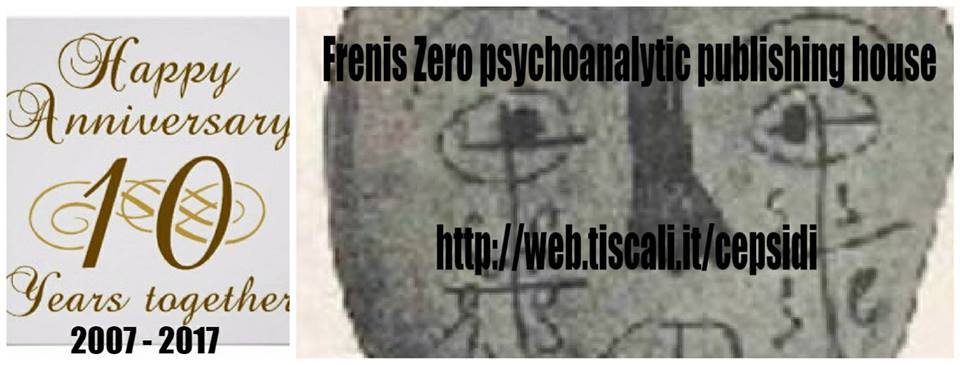


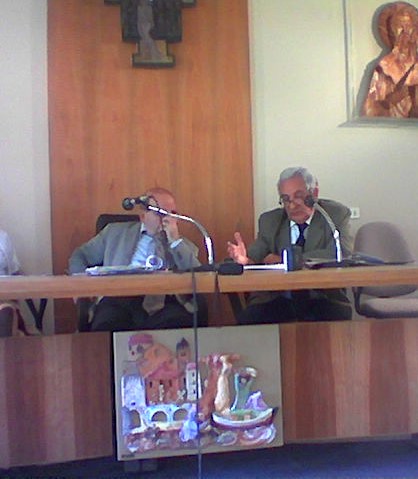 Andreas Giannakoulas and Max Hernández
during a seminar in Bari (Italy) (2004)
Andreas Giannakoulas and Max Hernández
during a seminar in Bari (Italy) (2004)




